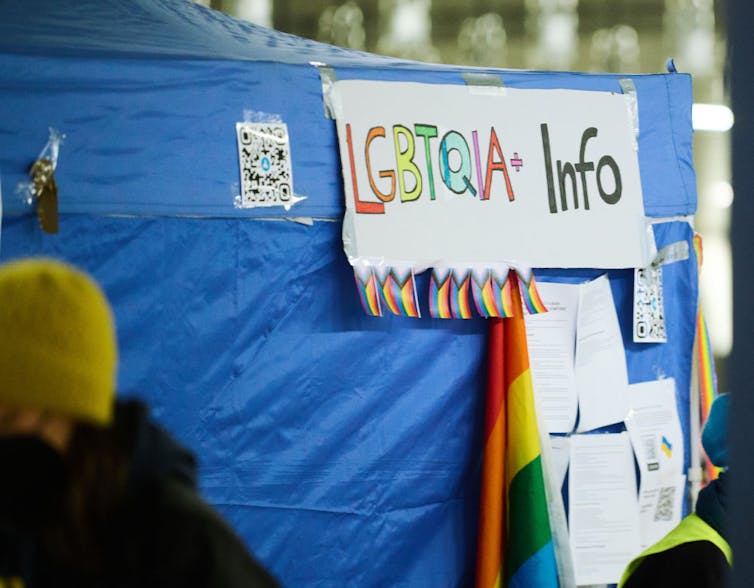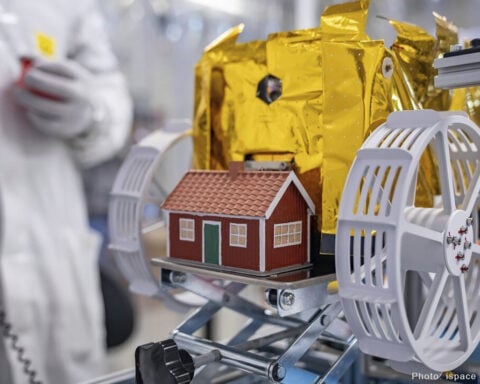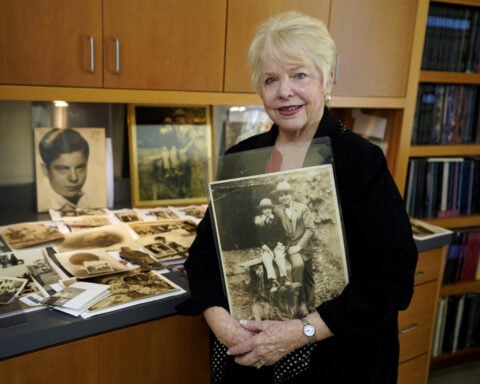A student in my graduate seminar recently mentioned seeing her “niblings” at Thanksgiving. Some of the students in my class were clearly familiar with the term. But others frowned, suggesting that they hadn’t heard the term before, or didn’t know what it meant.
A nibling is the child of one’s brothers or sisters. The word is a blend of the “n” in “niece” and “nephew” with “sibling,” and it was coined in the early 1950s by linguist Samuel Martin.
But even though it’s been around for over 70 years, the word isn’t included in the online Merriam-Webster dictionary.
The most recent crop of terms added to the dictionary includes words like edgelord – a person who makes provocative statements online – and thirst trap, which is an online photo that’s meant to grab attention. Edgelord was first recorded in 2015, and thirst trap dates from 2011.
So why have these newbie words made the cut? Why have they been chosen for inclusion, but not nibling?
In making such decisions, the dictionary’s editors note that they employ two criteria. First, a term “must be used in a substantial number of citations that come from a wide range of publications.” Second, these citations need to cover “a considerable period of time.”
But there may be another litmus test that the editors employ, perhaps subconsciously: aesthetics.
Blended words
Many new terms are a blend of two words that already exist.
Some of these mashups are now so familiar that they aren’t even perceived as such, such as smog, a combination of “smoke” and “fog,” and motel, a union of “motor” and “hotel.”
Dictionary editors are conservative because they want to enshrine just the new words that remain reasonably popular and that are likely to have some staying power. But dictionaries are full of terms that have fallen out of use. When is the last time you heard someone refer to a houppelande or a blatherskite?
Editors have chosen to exclude some terms despite the fact that they have been around for a long time. Nibling is one, and antidisestablishmentarianism is another, even though the latter was first used over a century ago, in 1900.
But after 70 years in the shadows, nibling may finally be having its moment. In 2020, Jennifer Lopez used it in an Instagram post to refer to her sister’s transgender child. Her post was viewed over 2 million times. The term was also used in the sixth season of the TV show “Young Sheldon” to refer to the title character’s unborn niece or nephew.
However, nibling has never graced the pages of The New York Times, and it’s appeared just twice in The Washington Post, in articles from late 2023.
The importance of aesthetics
With English speakers becoming more comfortable with gender-neutral terms, such as the singular “they,” nibling seems like a natural addition to English’s gender-neutral lexicon.
But it seems that, in addition to utility and widespread use, a third factor plays a role: aesthetic quality. Nibling simply sounds off-putting, too similar to “nibbling” – and not exactly something that you want to associate with family members.
A 2021 Daily Mail article agreed, calling nibling “skin crawling and awkward.”
And consider the case of Latinx, a word that was coined to be gender-neutral and inclusive. Although it has appeared in Merriam-Webster since 2018, it may end up going the way of an expression like “colored,” a term that was once “a term of racial pride,” according to the Oxford English Dictionary, but which is now considered offensive and has fallen out of use.
No matter how useful Latinx may be, the term is widely disliked in the Hispanic community. A major reason seems to be the word’s lack of aesthetics. One Latina interviewed by Billboard described it as sounding “ugly,” and people can’t seem to agree on how to pronounce it. The more pronounceable Latine has been proposed as an alternative.
“Phablet” not fabulous?
Aesthetics may also help explain why some other blended words, such as phablet, a fusion of phone and tablet, have failed to catch on. A term for large cellphones, it’s been in use since at least 2010, although it doesn’t currently appear in Merriam-Webster’s word list.
Phablet made its first appearance in The New York Times in 2013 and was set off by quotation marks – a standard way of demarcating a new term. In its last appearance, excluding in puzzles, in that newspaper in 2019, it was still bracketed by quotation marks.
Why did it fail to catch on?
In a 2013 article, The Atlantic characterized phablet as “horrible,” “stupid” and “clumsy.” The piece suggested that it reminded people of words like “flab” and “phlegm.” Usage data compiled by Oxford English Dictionary editors indicates that phablet peaked in popularity in 2018 and has been dropping ever since.
Utility versus aesthetics
In some cases, however, utility has clearly trumped aesthetics. The initialism LGBT, which is clunky to say, has been used since at least 1992 and has appeared in almost 6,000 articles in The New York Times since 2000.
LGBT has sprouted a number of more inclusive variants, such as LGBTQ, LGBTQ+ and LGBTQIA, which makes it difficult to know which one to use.

Nevertheless, these ungainly initialisms remain popular, despite their awkwardness, because they clearly fill a need.
Will nibling go the way of phablet, or will it become as common as LGBTQ?
Merriam-Webster’s editors have nibling on their list of words they are watching. But it remains to be seen whether a useful but awkward blend will appeal to a more inclusive world.

Roger J. Kreuz does not work for, consult, own shares in or receive funding from any company or organization that would benefit from this article, and has disclosed no relevant affiliations beyond their academic appointment.
Source: The Conversation

 Nippon Steel wants to work with Trump administration on US Steel deal, Mori tells WSJ
Nippon Steel wants to work with Trump administration on US Steel deal, Mori tells WSJ
 BOJ will raise rates if economy, price conditions continue to improve, Ueda says
BOJ will raise rates if economy, price conditions continue to improve, Ueda says
 Stock market today: Asian stocks mixed ahead of US inflation data
Stock market today: Asian stocks mixed ahead of US inflation data
 After cable damage, Taiwan to step up surveillance of flag of convenience ships
After cable damage, Taiwan to step up surveillance of flag of convenience ships
 As fires ravage Los Angeles, Tiger Woods isn't sure what will happen with Riviera tournament
As fires ravage Los Angeles, Tiger Woods isn't sure what will happen with Riviera tournament
 Antetokounmpo gets 50th career triple-double as Bucks win 130-115 to end Kings' 7-game win streak
Antetokounmpo gets 50th career triple-double as Bucks win 130-115 to end Kings' 7-game win streak
 Zheng loses to No 97 Siegemund, Osaka rallies to advance at the Australian Open
Zheng loses to No 97 Siegemund, Osaka rallies to advance at the Australian Open
 A rose by any other name would smell as sweet – but would it sound as sweet?
A rose by any other name would smell as sweet – but would it sound as sweet?







